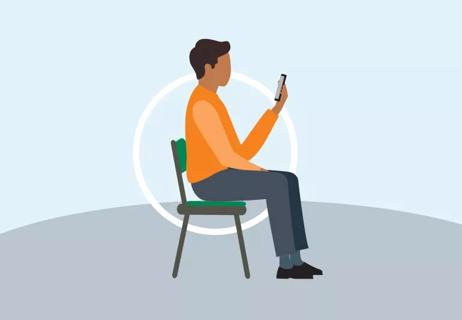Your commute could be the reason for your neck, back and shoulder pain

Driving can be stressful. Traffic, road rage and the car that just cut you off without a blinker can all contribute to how you feel behind the wheel. But it’s not just the external elements that can make your daily commute or road trip less enjoyable – your driving posture and the way you sit in the car can contribute to neck, back and shoulder pain.
Advertisement
Cleveland Clinic is a non-profit academic medical center. Advertising on our site helps support our mission. We do not endorse non-Cleveland Clinic products or services. Policy
Ugh! As if you needed another reason to be more stressed while driving.
“The first thing I tell people when it comes to neck, back pain and shoulder is that everyBODY is different,” says physical therapist, Mary Morrison, PT, DScPT. “What feels comfortable for one person might cause another pain. It’s crucial to find a comfortable and supportive position for you.”
Morrison offers these tips and advice about driving posture, so you can stop asking “are we there yet” and start enjoying the ride:
Advertisement
Figuring out what positions are causing you issues or where exactly your discomfort is coming from will likely take a few modifications, says Morrison. Try to make a few changes at a time to help pinpoint what is triggering your pain. First try adjusting your seat for a few days, then try different positions with your arms if that doesn’t work and so on.
Changing too much too quickly could make your symptoms worse and leave you feeling clueless, so it’s a good idea to proceed with caution. You might not have the strength to sit in a new position for your entire 30 minute commute, so trying a new position for five minutes at a time is a good place to start.
“Set up your car to work for you and practice good driving ergonomics as if you were sitting at your desk at work,” says Morrison. “Driving shouldn’t be more stressful than it already is and it certainly shouldn’t cause pain. If you can’t seem to figure it out with a few adjustments on your own, it’s time to see a physical therapist.”
Advertisement
Learn more about our editorial process.
Advertisement

A chiropractor offers guidance and simple exercises

Here’s how working from bed impacts your health

Avoid discomfort with the proper workstation

Ease pain and stay active by keeping your spine in its proper position

Most recommended precautions center around minimizing bruising or swelling

Even one drink can have an impact on your cognitive function leading to slurred speech, blurred vision and impaired memory

Type 2 diabetes isn’t inevitable with these dietary changes

Applying a hot or cold compress can help with pain